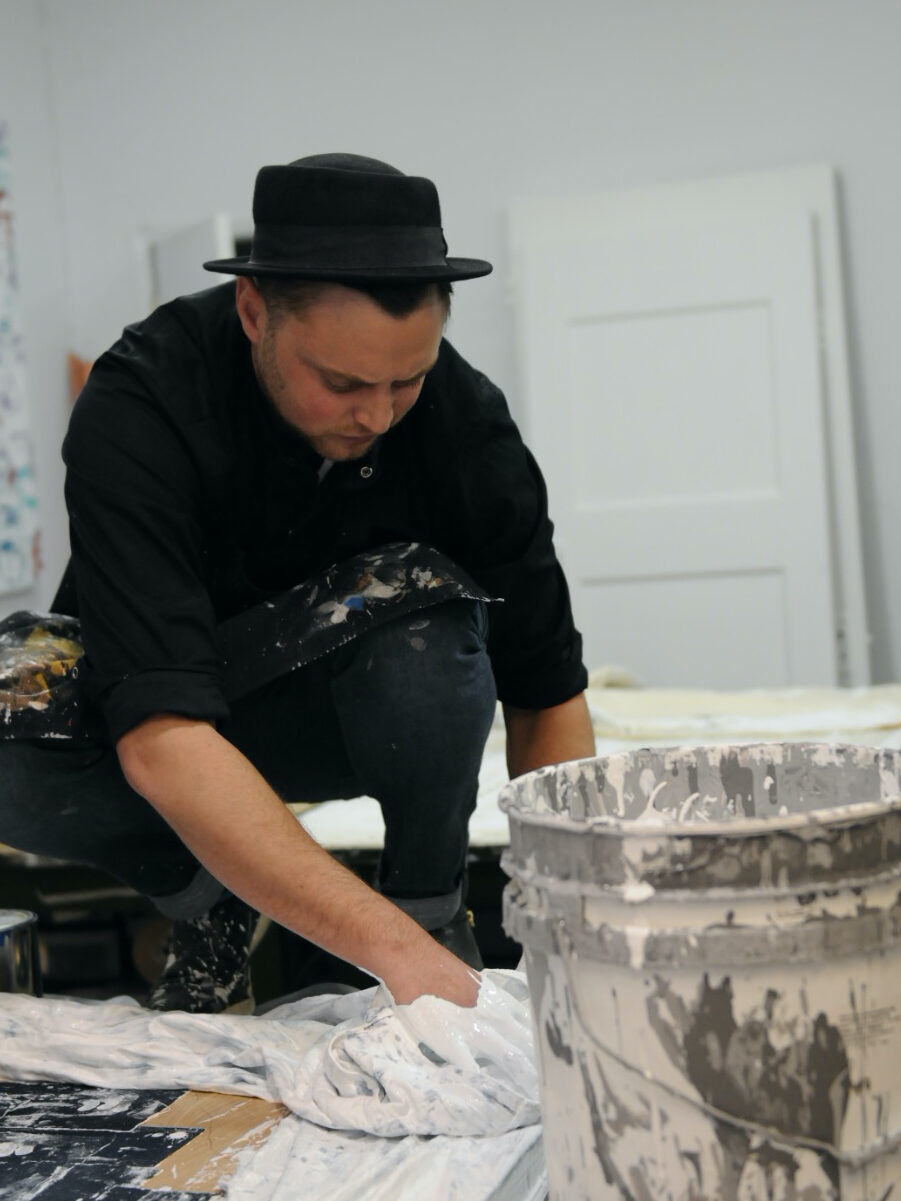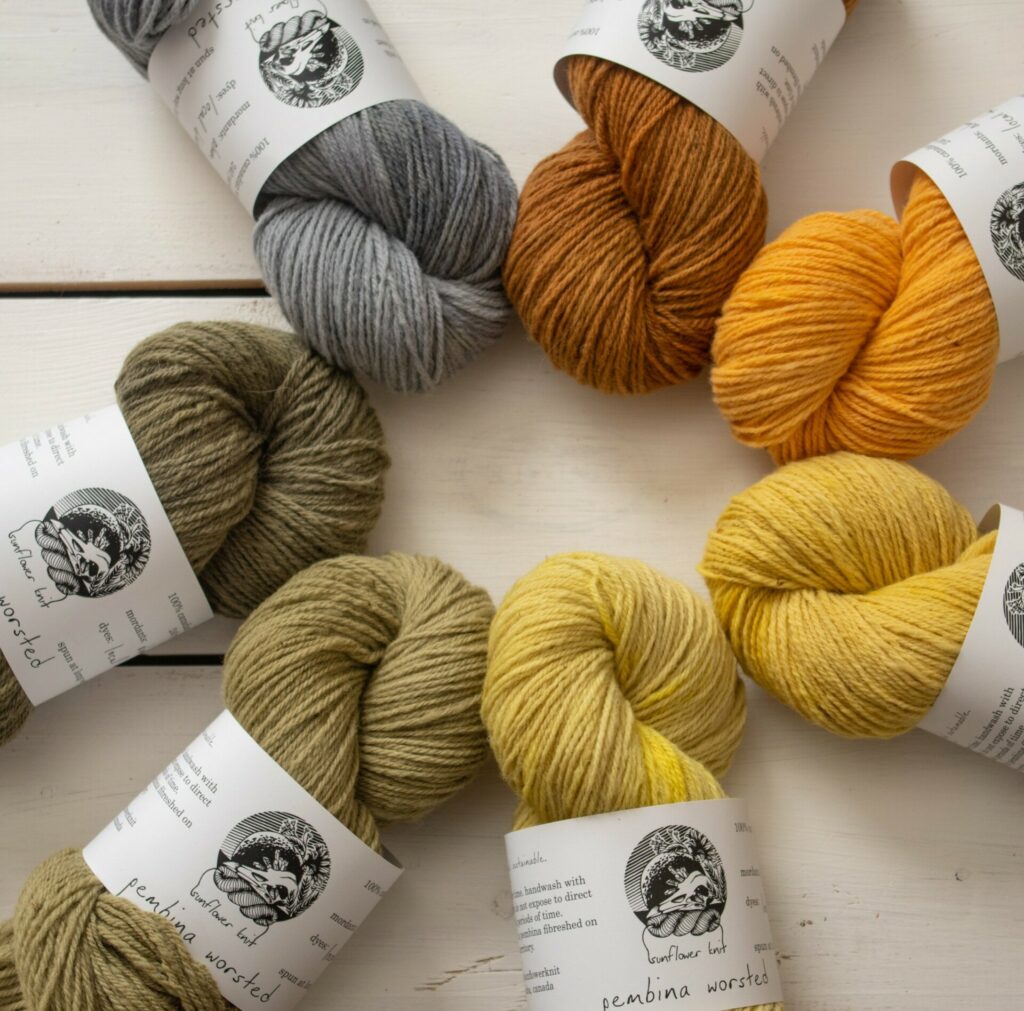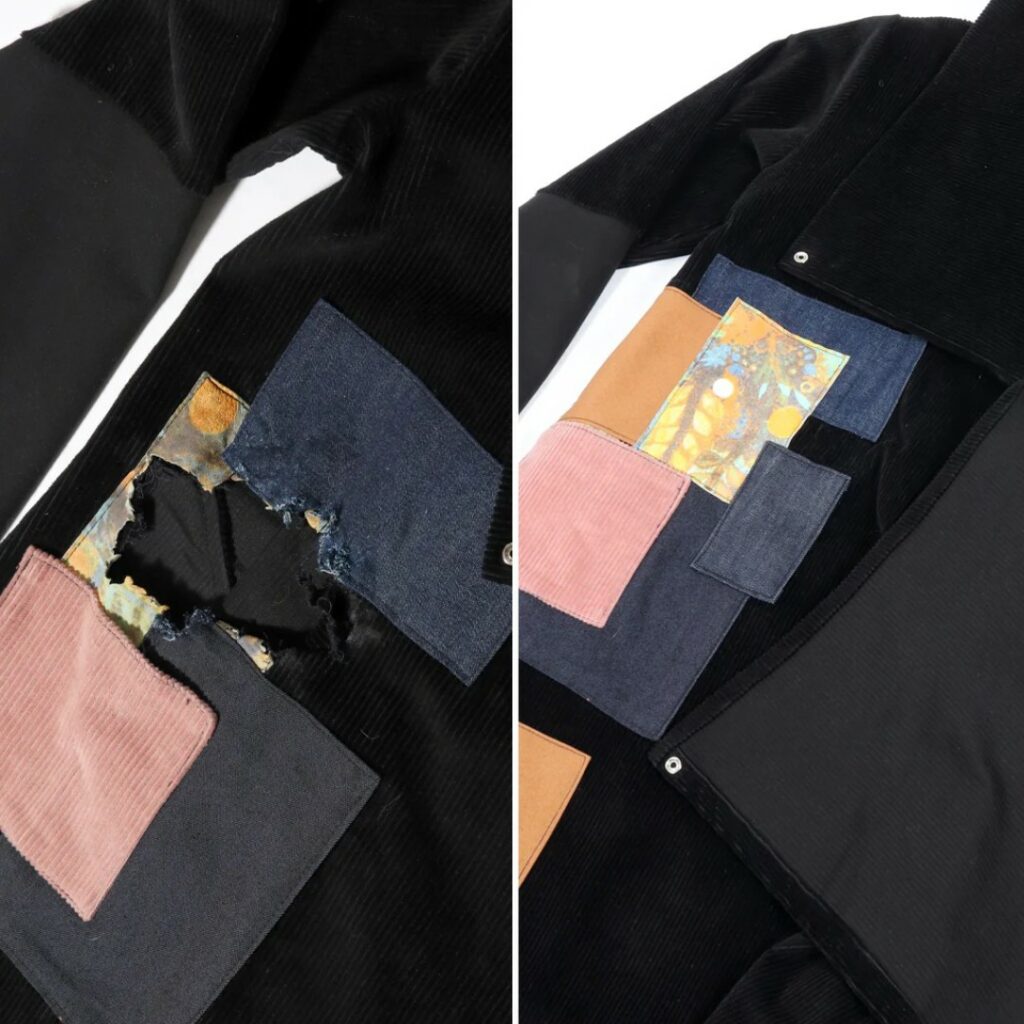Can slow fashion put the brakes on the fashion industry’s devastating impacts?
Source: Winnipeg Sews
Fast fashion is the world’s second-largest polluter; its consequences are frightening at an incomprehensible scale. Fortunately, it has a cure: slow fashion.
I talked with textile educators and artists to gain an understanding of slow fashion as a lifestyle, business, and mindset.
What is
slow fashion?
“Slow fashion is … a mindset around consumption vs. a strict rule of no new clothes or only buying four items a year. Slow fashion makes you pause before you buy (or make) a garment and confirm that it meets your values.” Said Katherine Magne, sewist, educator, and owner of Winnipeg Sews.
Slow fashion caught Magne’s attention in 2014. And in 2015, she swore off new clothing for an entire year after watching The True Cost, a documentary film about the Rana Plaza Collapse. “Anything I ‘had to have,’ I would make or thrift,” said Magne.
Three years later, she opened the textile studio Winnipeg Sews, which she described as “a community connection point for people starting or continuing their slow fashion journey.”
Lennard Taylor—creative director and artist at his namesake fashion brand Lennard Taylor—defined slow fashion as “ethically and sustainably made clothing that promotes good feelings. It is mindful companies that create circular models that minimize waste and maximize longevity.”

The Fabric Collective, a project by Winnipeg Sews, is an active example of a circular model. The Fabric Collective is a community-sourced fabric collection and distribution business. Magne purchases unwanted or surplus fabric from local professional or home sewists and resells it to others, extending the fabric’s lifespan. This process keeps prices low, making natural fibres more accessible, as well as creating a circular economy by giving money back to those who purchased it originally and no longer had use for it. It also has environmental benefits; buying secondhand cuts out transatlantic and trans-Canada shipping, resulting in a much lower carbon footprint.
Natural dyer, textile artist, and educator Ash Alberg completes the circle by bringing knowledge of slow fashion to others in the form of natural dying classes. Alberg teaches in-person, online, and in classrooms. They also develop resources for independent study at home or in the classroom.

Source: sunflower knit
Alberg came from a background of frontline grassroots activism but burned out in their early 20s. “I was trying to find my way back to it and realized that fashion was the meeting point of everything I cared about. Gender issues, environmental issues, labor rights, decolonization efforts—everything ties back into textiles.” Currently, the fashion industry operates in the “most toxic ways, quite literally, in those regards,” Alberg said. They believe that slow fashion is the antithesis. Slow fashion is thoughtful, sustainable, and empowering.
Slow fashion is great… Why isn’t everyone doing it?
Magne, Taylor, and Alberg all prioritize sustainability. “Sustainability is baked into the heart of Winnipeg Sews as one of our core values, along with education and inclusion,” shared Magne. Winnipeg Sews has been using natural fibres and recycled packaging, and making use of their fabric scraps since the beginning. “Moving to circular textiles and hosting our annual Fabric Swap have made a huge shift in our ability to meet that core value,” said Magne.
Taylor also “strives to create circular models for sustainability and minimize waste at every turn.” The studio uses sustainable fabrics, is zero waste, and encourages customers to wear their garments longer with their Refresh Program.

Source: Lennard Taylor
But lack of transparency in the fashion industry has made it difficult to ensure sustainable and ethical practices. It’s always harder to do a good job than a poor one, and this is where fast fashion businesses have a leg up on their much more sustainable—and much smaller—counterparts. Taylor expressed that it has been a battle to remain sustainable, particularly sourcing sustainable materials. “This industry is full of liars, cheaters, and unethical people, which is why it is the 2nd dirtiest industry in the world.”
Alberg faces a similar problem with their natural dyeing, struggling to find background information on the plants used in their dyes. They have to consider countless factors; When were they harvested? What kind of environment do they come from? Does something else need this plant at this time?
For Magne, Taylor, and Alberg, the hope outweighs the struggles. Taylor talked of standing behind his products and the confidence and joy he sees in his customers when they wear his garments. “When clothing is made with love, you feel it far beyond the seams,” he said. Magne talked about the advantage of being able to speak freely about her business because she believes in what she offers so deeply.
Where do we start?
As consumers, what can we do to support slow fashion and battle fast fashion?
The simplest and most powerful thing we can do is wear our clothes longer and refrain from buying more. Right now, the average garment is worn only seven times. Increasing the lifespan of a garment by nine months can reduce carbon, waste, and water footprints by 20-30 per cent. “The most sustainable garments are the ones that already exist,” said Alberg.
But all of our clothes will wear out eventually. Alberg talked about each item going through stages: at the beginning, you only wear it on special occasions. Then, it becomes a casual piece. Then something you wear for garden work or painting, and finally it can be used as a rag. Simply keeping a garment through those stages is one of the most impactful things you can do.
Keeping clothing longer also saves us money. Taylor encourages us to think about the price of our clothing on a “cost per wear” model instead of the number on the price tag. Because the lifespan of a slow fashion garment is so much higher than that of a cheap, fast fashion garment, the cost per wear is much lower.
Buying a high-quality shirt for $80 seems expensive in the moment, but works out to cost less in the long run. If you wear it 60 times over the next two years—which is only two or three times every month—the cost per wear is $1.33. Keeping it for four years brings the cost per wear down to $0.66. If you buy a shirt designed to only be worn a few times for $25 from a fast fashion retailer, and it falls apart or is thrown out after being worn just seven times, the cost per wear is $3.50.
Another thing that Alberg made clear was that only buying slow fashion isn’t possible for everyone, and to start where you can. “Very few of us have the kind of resources that allow us to have a perfectly sustainable [and] climate-beneficial wardrobe across the board,” said Alberg. Long story short, do what you can.
Wearing your clothes longer is just one thing. What else can be done?
Elise Epp, Executive Director of Fashion Revolution Canada, has an excellent portal for slow fashion here. Scroll to the bottom to find out what you can do about fast fashion.
As part of The Fast Fashion Project, I’ve also created a “take action” portal here.
Unfortunately, after the interviews, Winnipeg Sews and The Fabric Collective announced that they will be closing in December 2024.
Article sources
Click on text for specific sources.

join the conversation…
Tags